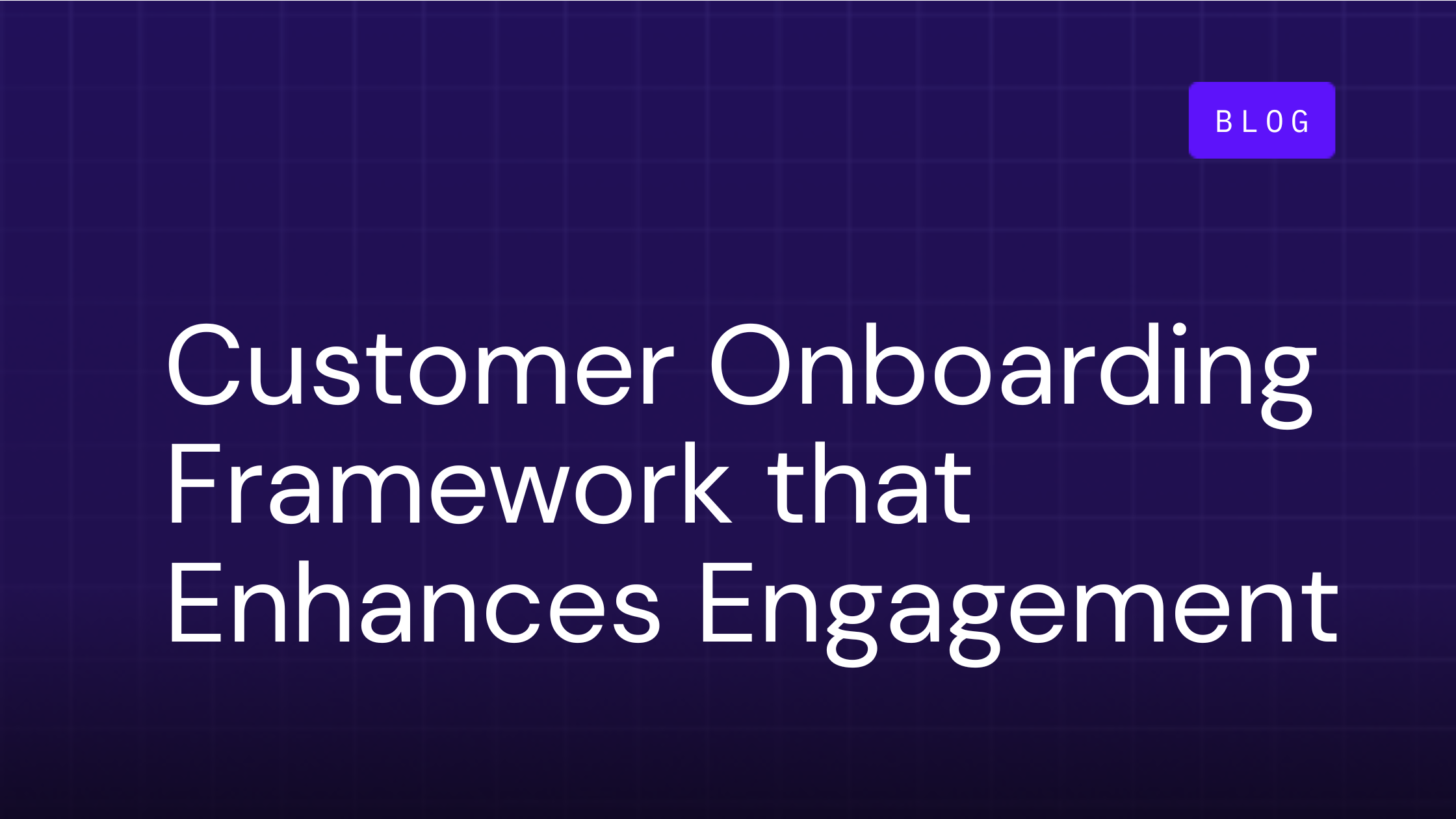First impressions are crucial. This is where the customer onboarding framework comes into play, acting as the linchpin for turning new sign-ups into lifelong customers. But what exactly is a customer onboarding framework, and why is it so pivotal for customer retention in SaaS companies? In this post, we'll dive into these questions, outline the steps to create a successful framework, introduce an original acronym to guide your efforts, and provide practical tips for streamlining the process.
What Is a Customer Onboarding Framework?
A customer onboarding framework is the structured approach your company uses to guide new customers from signature to adoption and early success. Unlike a simple checklist, a framework is adaptable, scalable, and repeatable. It includes the workflows, tools, communication strategies, and checkpoints or milestones that help customers:
Done well, an onboarding framework ensures that no customer slips through the cracks and that your internal teams stay aligned on what great onboarding looks like.
Understanding Customer Onboarding Frameworks
A well-designed customer onboarding framework is crucial for establishing a strong relationship with new clients from the very start. This systematic approach guides customers through their initial interactions with a brand. It's not just a series of steps, but a pivotal experience that sets the tone for the entire customer journey. An effective onboarding process fuels customer engagement, drives satisfaction and retention, and opens doors for future upselling opportunities.
In the SaaS industry, customers don't immediately grasp a product's full value. It's during the onboarding journey that they learn to navigate the software and recognize its benefits for their daily operations. This is where a robust customer onboarding tool becomes indispensable. These tools go beyond just introducing features; they engage customers in a dialogue, understand their needs and preferences, and tailor the onboarding experience accordingly.
A robust customer onboarding solution bridges the customer's needs with the product's capabilities, ensuring a personalized and meaningful user journey. Combined with an effective onboarding framework, client onboarding software actively engages new users from the start, informing and empowering them.
The onboarding process creates a supportive environment, nurturing long-term customer engagement. Ultimately, an onboarding framework powered by the right tools and software enhances the entire user experience, laying the foundation for a lasting, fruitful relationship between customer and company.
Key Elements of a Successful Framework
The hallmark of a successful customer onboarding framework lies in its ability to be scalable, empower customers to self-serve, and balance low-touch with high-touch quality moments that lead to "Aha!" realizations. Continuous optimization, agile adaptation, data-driven insights, and alignment with customer success strategies are also integral.
Typical onboarding steps in a digital adoption platform include a welcome message, kickoff call, playbook creation, module and task setup, training, preparation for go-live, customer support, milestone tracking, and progress evaluation. Post-onboarding stages should focus on continuous engagement, support, upselling opportunities, and the refinement of the framework.
Introducing the SCALE Framework
To simplify the creation of a customer onboarding framework, think of the SCALE acronym:
- Scalability: Design your framework to easily adapt as your customer base grows.
- Customer Empowerment: Enable customers to self-serve through intuitive interfaces and comprehensive resources.
- Aha Moments: Strategically incorporate high-touch interactions that reveal the core value of your SaaS to the customer.
- Lean Operations: Use data and feedback to continuously refine and optimize the onboarding process, ensuring it remains efficient and effective.
- Engagement: Maintain regular communication and support, encouraging an ongoing relationship and uncovering further opportunities for growth.
Crafting Your Framework with SCALE
- Scalability: Begin by assessing your current onboarding process for bottlenecks and scalability issues. Tools like OnRamp can help by providing customizable project creation features that cater to both low-touch and white-glove customer segments, facilitating scalability.
- Customer Empowerment: Utilize OnRamp's templates or import existing plans to empower customers' app experience. The platform's flexibility in allowing customers to follow action plans or collaborate via shared channels like Slack ensures they can self-serve effectively.
- Aha Moments: Design your onboarding steps to include both educational elements and interactive sessions that highlight the unique benefits of your product, creating memorable discoveries and moments of insight.
- Lean Operations: Implement continuous feedback loops to gather data and insights. OnRamp's capability to automatically generate comprehensive reports enables businesses to review results and optimize the user journey efficiently.
- Engagement: After the initial onboarding, focus on maintaining engagement through regular updates, support, and by providing upselling opportunities. This helps to solidify the customer relationship and encourages loyalty.
Streamlining Your Framework
To further streamline your customer onboarding framework, keep these tips in mind:
- Understand your users deeply to tailor the onboarding experience to their needs.
- Define clear goals for each onboarding phase to measure success accurately.
- Prioritize simplicity and personalization to make the onboarding process more enjoyable and relevant for each customer.
- Leverage customer feedback continuously to refine and improve your framework.
Optimizing Customer Onboarding for Long-Term Engagement
The customer onboarding process is vital for turning new customers into loyal advocates in the SaaS industry. By employing the SCALE acronym and leveraging platforms like OnRamp, you can ensure a smooth onboarding process that scales with your organization's growth, empowers your customers, and fosters long-term success. For your SaaS company to remain at the forefront of user experience and retention, you need to evolve based on customer feedback and changing needs. If you're ready to improve your onboarding, schedule a demo with our team today

